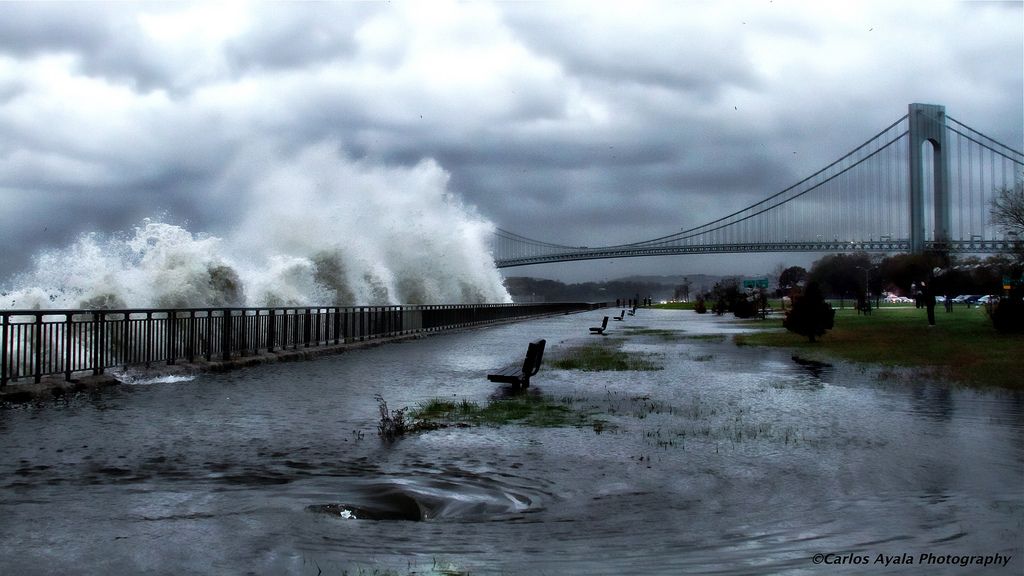
Hurricane Sandy Smashes Ocean Wave Records

Monster waves hit two New York harbors Oct. 29 due to Hurricane Sandy, putting the superstorm in the record books yet again.
A 32.5-foot (9.9 meters) wave sloshed past a buoy about 15 nautical miles (28 kilometers) southeast of Breezy Point, N.Y., at 8:50 p.m., beating the record set by a Hurricane Irene wave on Aug. 28, 2011, by 6.5 feet (2 m).
Coming in a close second was a wave 31 feet high (9.4 m) recorded at a buoy located 30 nautical miles (55 km) south of Islip, Long Island. The previous record there was 30 feet (9 m), set during a fierce nor'easter on Dec. 11, 1992, Climate Central first reported.
The wave heights are the largest in the region since record-keeping began in 1975, the National Weather Service said in a statement. However, records at the buoy near Breezy Point extend only to 2008, the NWS said.
Hurricane Sandy had already broken several other records. The storm surge pushed water to a record 13.88 feet (4.23 m) at Battery Park on the tip of Manhattan, beating the record of 10.02 feet (3.05 m) set by Hurricane Donna in 1960 in the same place.
The superstorm smashed pressure records as well, with the barometer hitting a record low 948 millibars in Atlantic City, N.J., and setting other record low pressures in New Jersey, Pennsylvania and Maryland. (A typical low-pressure system usually hits around 1,000 mb.)
Hurricane Sandy was also extremely large, even for a hurricane. At its peak, the storm's hurricane-force winds extended 175 miles (280 km) from its center, and tropical storm-force winds were felt 520 miles (835 km) away.
Sign up for the Live Science daily newsletter now
Get the world’s most fascinating discoveries delivered straight to your inbox.
It is also the second-most energetic hurricane in modern records, second only to Hurricane Isabel, by one measure.
Follow OurAmazingPlanet on Twitter @OAPlanet. We're also on Facebook and Google+.












